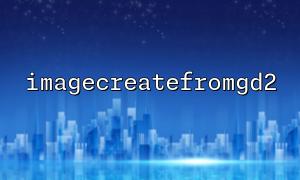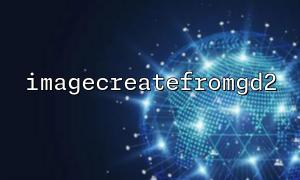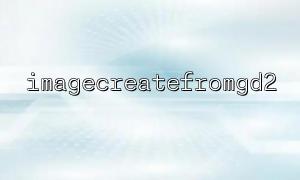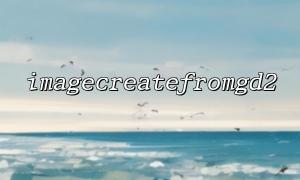During PHP image processing, we often use various functions provided by the GD library to read, manipulate and generate images. When processing images in .gd2 format, PHP provides two very similar functions: imagecreatefromgd2() and imagecreatefromgd2part() . At first glance, they have similar names and seem similar functions, but in fact, there are essential differences in their purpose and performance.
imagecreatefromgd2() is a function used to load the entire .gd2 file. The syntax is as follows:
$im = imagecreatefromgd2('https://m66.net/images/sample.gd2');
This function will decode the entire .gd2 file and load it into memory to generate an image resource. This method is direct and effective when dealing with smaller images.
When the .gd2 file is very large, imagecreatefromgd2() will load the entire image into memory, resulting in high memory consumption and inefficiency. This seems very wasteful in scenarios where only a portion of the image data is needed.
To solve the above problem, PHP provides the imagecreatefromgd2part() function, allowing you to load only a part of the image area in the .gd2 file.
$im = imagecreatefromgd2part('https://m66.net/images/sample.gd2', $srcX, $srcY, $width, $height);
Parameter description:
$srcX and $srcY : The starting coordinates of the region to be extracted.
$width and $height : The size of the image area to be extracted.
Memory saving : Load only the required area.
Faster response : Especially suitable for scenes where image thumbnails or local images are loaded on demand in web applications.
Suitable for large image processing : imagecreatefromgd2part() is a safer choice when you are facing a high resolution or large .gd2 image.
Suppose you have a .gd2 image of 10000x10000 and just want to generate a 200x200 thumbnail.
$full = imagecreatefromgd2('https://m66.net/images/large.gd2');
$thumb = imagecreatetruecolor(200, 200);
imagecopyresampled($thumb, $full, 0, 0, 0, 0, 200, 200, 10000, 10000);
The memory pressure is high and the speed is slow.
$part = imagecreatefromgd2part('https://m66.net/images/large.gd2', 1000, 1000, 500, 500);
$thumb = imagecreatetruecolor(200, 200);
imagecopyresampled($thumb, $part, 0, 0, 0, 0, 200, 200, 500, 500);
More efficient, especially suitable for only partial areas of the image.
Although imagecreatefromgd2() and imagecreatefromgd2part() can read .gd2 images, in actual development, you should choose according to your needs. If you are dealing with small or whole images reading, you can continue to use imagecreatefromgd2() . But if you are facing large images, need to efficiently process image clips, or in memory-sensitive environments, imagecreatefromgd2part() is undoubtedly a better choice.
In the context of high-performance image processing, it is recommended to use imagecreatefromgd2part() instead of the traditional whole image reading method to improve efficiency and program stability.















